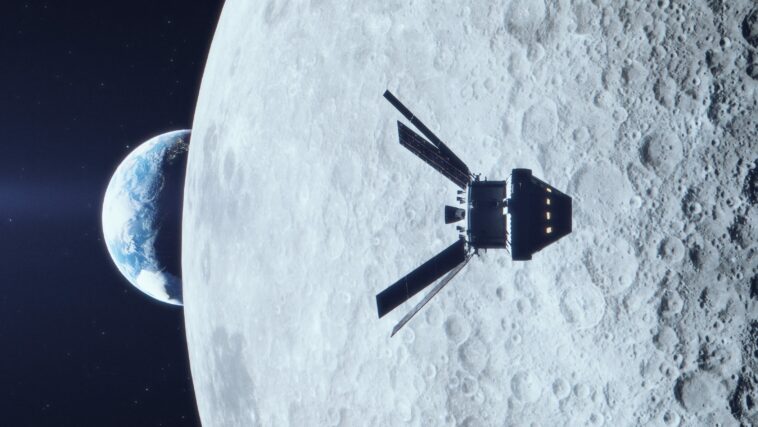On its journey to a world-record-breaking orbit, NASA’s Orion spacecraft, which had test dummies in place of people, buzzed the lunar surface and whipped around the far side.
It marks a significant accomplishment in the $4.1 billion test journey that started last Wednesday and is the first time a capsule has reached the moon in 50 years.
The crew capsule and its three wired-up dummies maneuvered within 81 miles of the Moon on the far side.
As a result of a communication breakdown lasting 30 minutes, Houston’s flight controllers were unaware of the success or failure of the crucial engine firing until the spacecraft had traveled 232,000 miles from Earth and had come out from behind the moon.
The images from the capsule’s cameras depicted the planet as a small blue sphere encircled by darkness.
Mission Control commentator Sandra Jones remarked, “Our light blue dot and its 8 billion people now coming into view.”
According to NASA, the capsule sped far above 5,000 mph when it made radio contact again. A little over an hour later, Orion flew over Tranquility Base, the site of July 20, 1969, landing of Neil Armstrong and Buzz Aldrin.
Flight director Zeb Scoville stated, “This is one of those days that you’ve been dreaming about and talking about for a long, long time.”
The moon grew bigger in the early morning footage sent back from the capsule as it rounded the last few thousand kilometers after launching from Florida’s Kennedy Space Center atop NASA’s most powerful rocket.
In order to get enough speed to reach the sweeping, uneven lunar orbit, Orion had to slingshot around the moon. In order to establish whether the engine firing proceeded according to plan, flight controllers assessed the data coming back. Friday’s blast will send the spacecraft into that extended orbit.
By roughly 250,000 miles from Earth, established by Apollo 13 in 1970, Orion will break NASA’s record for a spacecraft built for humans this coming weekend. It will continue on, getting close to 270,000 miles from Earth at its furthest next Monday.
Before returning to Earth, the capsule will spend almost a week in lunar orbit. Dec. 11 is set aside for a splashdown in the Pacific.
Orion lacks a lunar lander; a touchdown won’t occur until NASA astronauts use SpaceX’s Starship to try a lunar landing in 2025. Before that, as early as 2024 will see humans aboard the Orion spacecraft for a trip around the moon.
The way the mission was going, according to NASA authorities, was fantastic. They informed reporters late last week that the Space Launch System rocket performed very well in its premiere.
However, the launch pad at the Kennedy Space Center sustained more damage than anticipated from the 322-foot rocket. The elevator’s blast doors were torn off by the 8.8 million pounds of liftoff thrust’s immense energy.
Source: NPR




